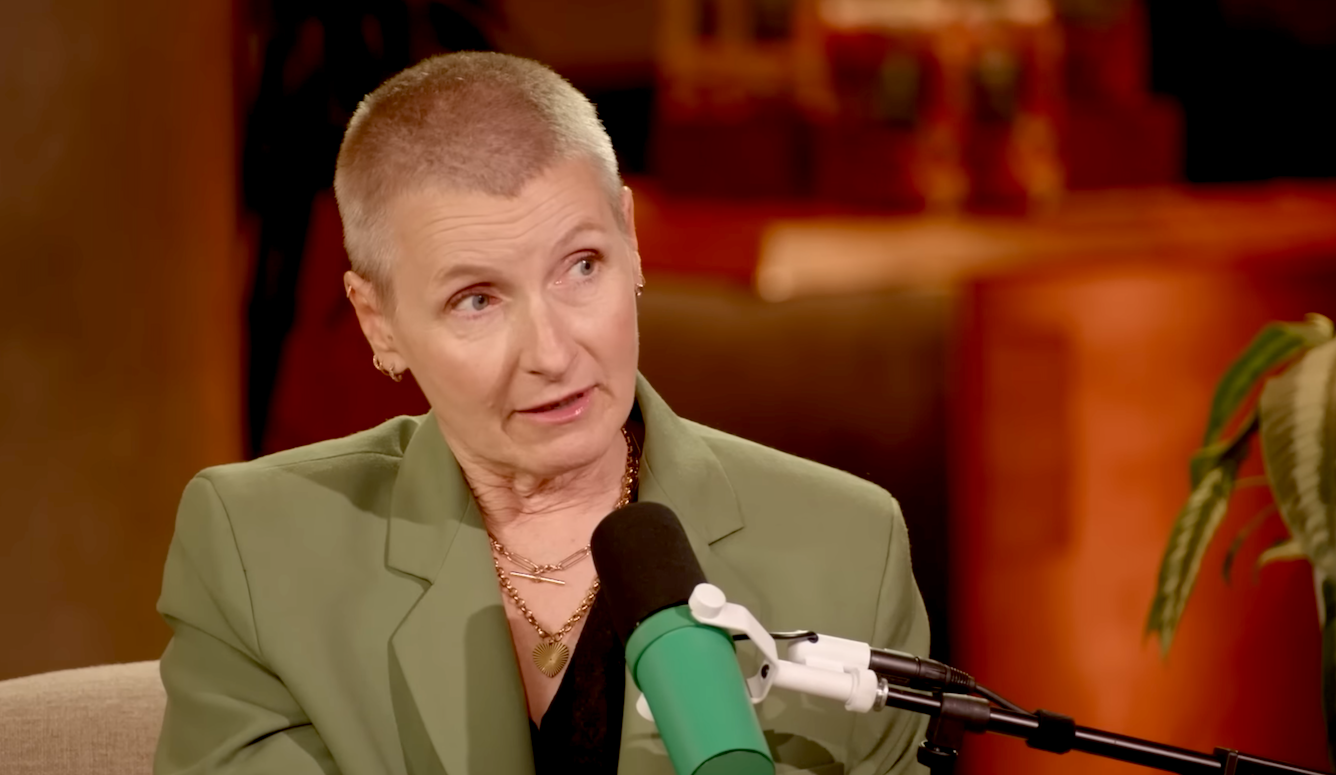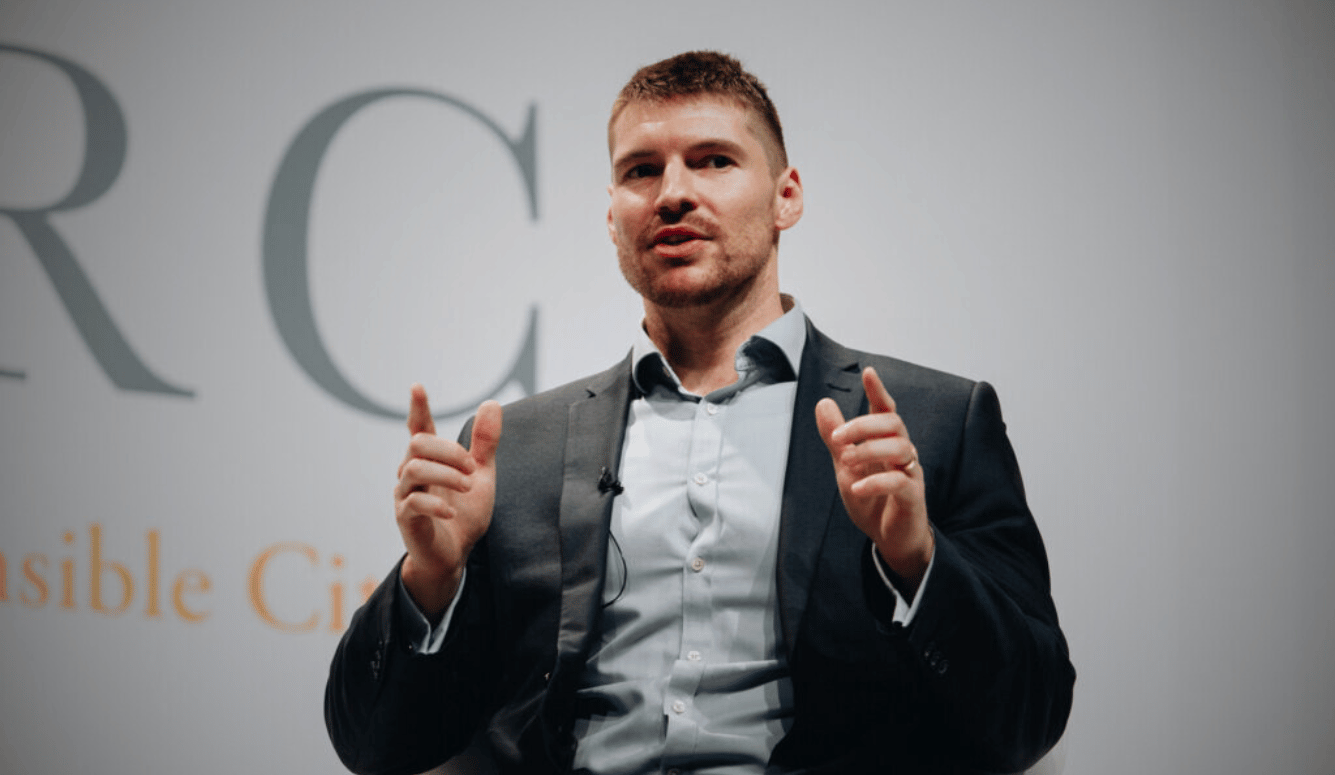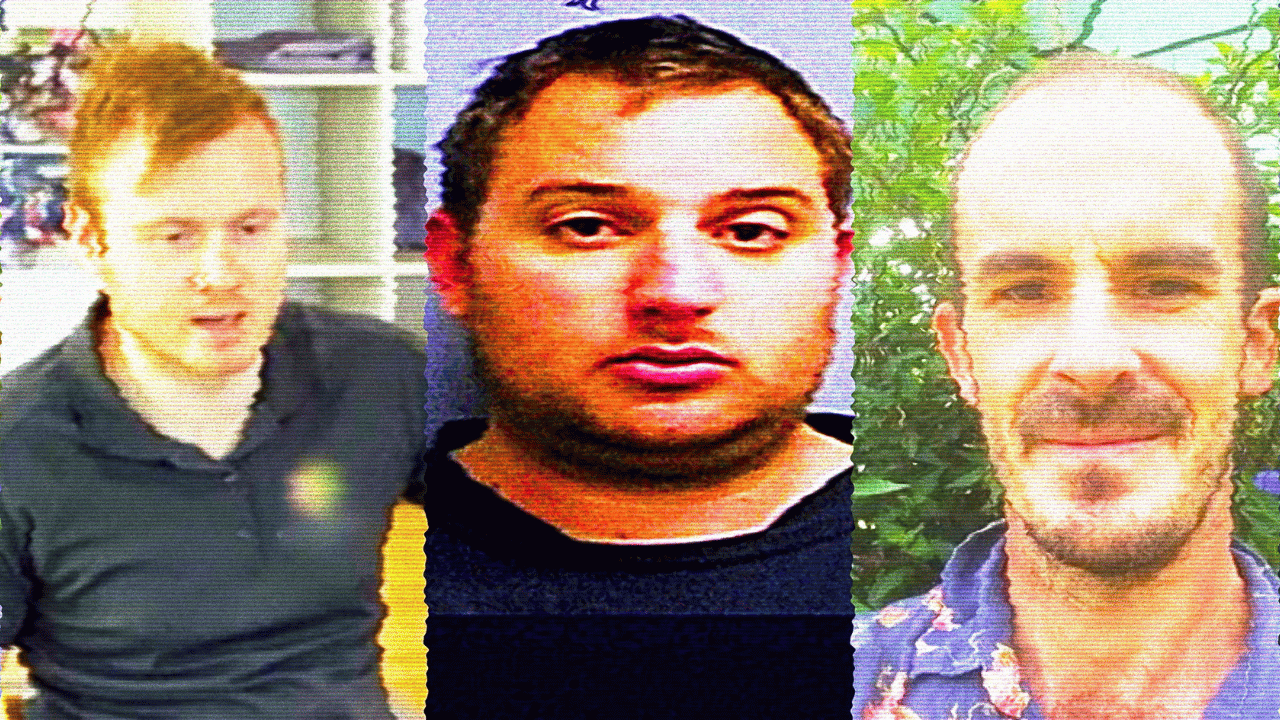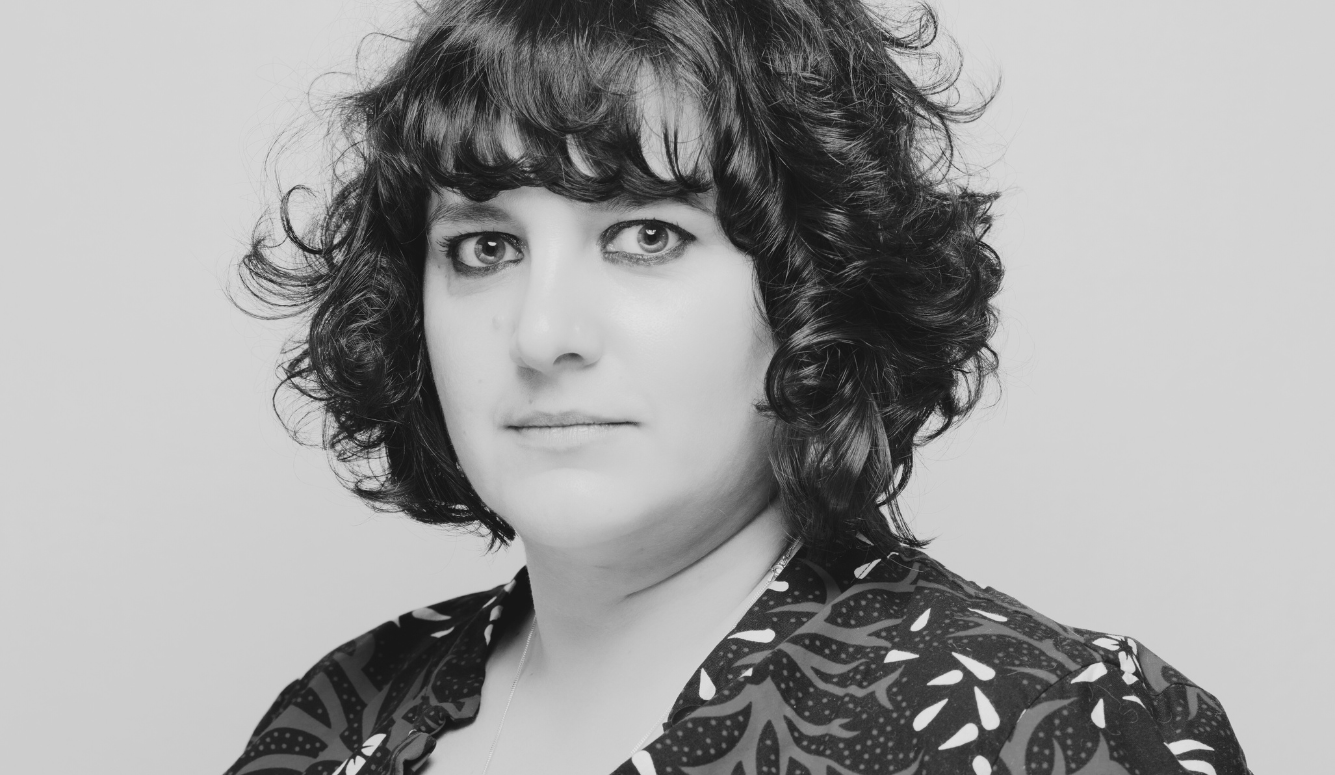Simple Pleasures
At One With the Disc: How the Pandemic Taught Me to Love (Real) Golf's Casual Cousin
No, disc golf won’t provide you with high-impact interval training: It’s basically a wilderness stroll punctuated by a bunch of full-body throwing motions.
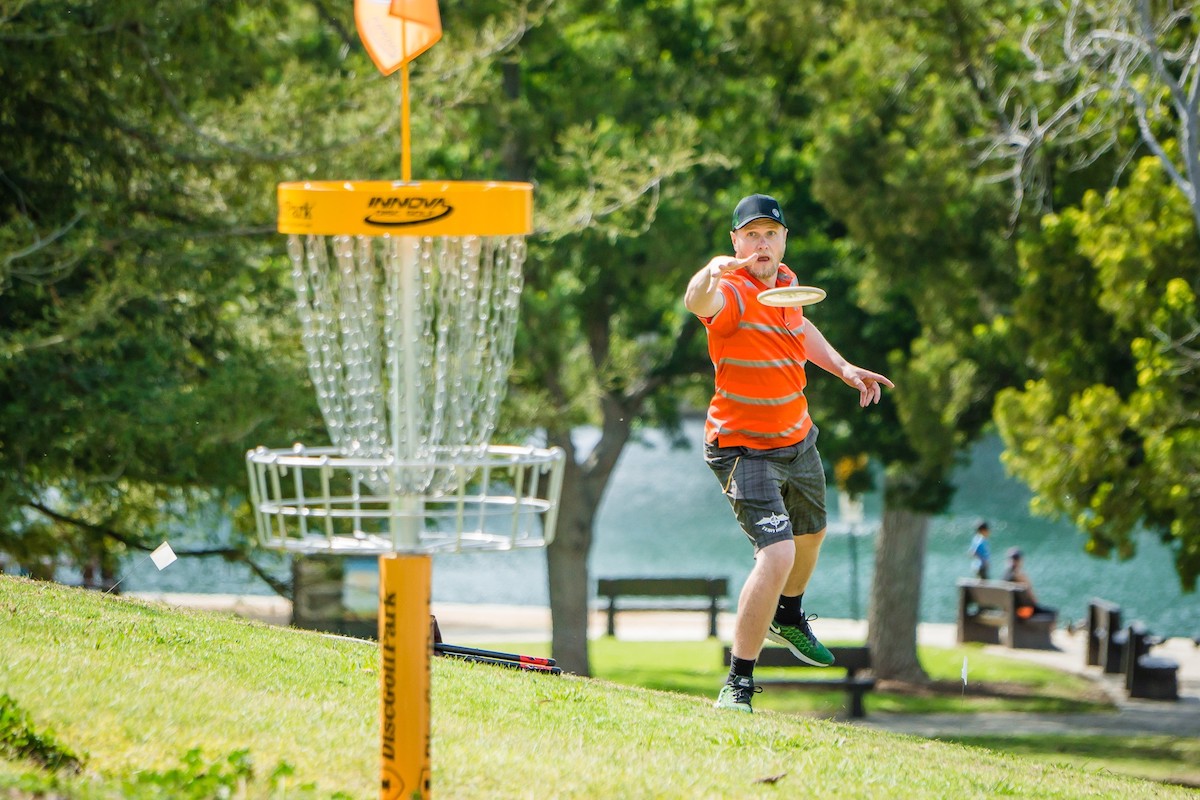
This is the first instalment in Simple Pleasures, an occasional Quillette series about some of the new joys that our writers have discovered as a result of the disruptions caused by the COVID-19 pandemic. Writers interested in contributing may contact Quillette at [email protected].
The fourth (and final) season of NBC’s cosmic comedy The Good Place, which became available for Netflix binge-watching in late 2020, was hit-and-miss. But it delivered enough quality lines and subplots to keep many of us watching until the tear-jerker conclusion. These included a multi-episode arc centered on Brent Norwalk, a one-time privileged Princeton graduate (as he keeps reminding everyone) who demonstrates his peevish, self-absorbed nature through a bratty shtick on a celestial golf course. Golf also figures in the novel that Norwalk authors, Six Feet Under Par: A Chip Driver Mystery, which he describes as “half spy novel, half murder mystery… half submarine adventure, half erotic memoir, and half political thriller. It’s also half golf tutorial, and half commentary on society.”
But there’s another golf motif in the show—this one involving Chidi Anagonye, a former professor whose moral pronouncements guide other characters through the philosophical problems they confront in the afterlife. In episode three of this final season (Chillaxing), Chidi briefly casts off his heavy philosophical air and takes off for the golf course. Except he’s not playing regular golf. Instead, he’s off for a round of disc golf—the variant, first popularized in the 1960s, which adapts golf principles to frisbees. (In fact, “frisbee” is a misnomer, because it’s a registered trademark refering to a circular plastic toy, as opposed to the smaller, denser, more precisely contoured discs that are used by disc golfers. But everyone who doesn’t play the sport calls them frisbees, and I’ve given up correcting them.) And while this disc-golf reference represents only a fleeting part of the show’s plot, the appearance of the chillaxed disc-golfing Chidi set alongside Norwalk’s tantrums on the links does serve to nail the very real difference between golf and disc-golf cultures.
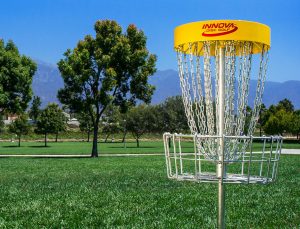
Traditional golf is expensive and time-consuming. It’s played mostly by older, wealthier individuals who drive out to some private course (assuming they don’t live in a gated, purpose-built “golf community”) and motor around in ridiculous little cars, pausing occasionally to summon a course attendant to serve them liquor and chips, while a small army of menial workers ensures that the fairways and greens have the appearance and texture of AstroTurf. Disc golf, by contrast, requires nothing more than a bunch of elevated metal baskets (these being the targets) spaced about a hundred meters apart (though often more, in the case of a challenging course), and an equal number of teepads, which, even at the high end, basically just consist of a slab of poured concrete. You can play it in a field, a desert, or a beach—even in a forest. An entire nine-hole disc-golf course can be created for as little as $3,000, or about a third the price of a single high-end golf cart. And because even a well-thrown disc typically won’t go half as far as a well-hit 1-wood (or do as much damage if it hits a person or building), disc golf courses can be easily nestled in as a shared-use amenity within campuses, public parks, campgrounds, and mountain trails.
I am very much a new convert. Until July, when I threw my first disc, I barely spared the sport a passing thought. And that passing thought was that this is a sport for dorks. The only reason I took up a friend’s invitation to play was that the pandemic had closed down my health club, and I wasn’t getting any exercise. At one point, that idiotic dad joke about pandemic weight gain—“Hey, why do they call it ‘COVID-19’? Because we all gained 19 pounds!”—became applicable to my own body with unsettling arithmetic precision. My lifestyle choice came down to this dork sport or an Amazon spending spree on elasticized pants.
I’m still a complete hack, despite months of almost daily play. (It’s a 12-month-a-year-sport. Here in Canada, it is not unheard of for players to fasten thin ribbons to the underside of their discs, so they can be found if they embed themselves in snowbanks.) And so I’m in no position to offer any kind of technical advice for aspiring players. But I can comment on the game’s culture, which is what really hooked me.
If you look for them, yes there are private disc-golf courses with well-tended lawns, especially down in the disc-golf heartland of the American south and Midwest, where it is not uncommon for tournaments to attracts thousands of spectators. But at your average neighbourhood course, there is no entrance fee, no tee times, and no dress code. I usually play alone, sometimes bringing my dog in tow. But I also sometimes join up casually with other groups, or vice versa. I have never met a single truly unpleasant person on a disc-golf course—literally not once—and feel completely comfortable asking total strangers for tips. I have seen people play in business suits, parkas, and babybjörns. A chain-smoking Filipino guy I know walks the course daily, tossing the disc in a weird underhand style while his wife strolls at her own pace. I once played half a round with a shirtless marijuana enthusiast who continually blasted Santana from a radio strapped to his hip. It seems like something fun to try myself once the weather gets warmer.
The paradox is that, while the culture of disc golf is loose and relaxed, the physics that govern the sport are highly complex. Unlike a golf ball, a golf disc is an airfoil (like an aircraft wing) that achieves vertical lift thanks to the difference in air pressure that act on its bottom and top surfaces. Moreover, unlike a golf ball, a golf disc operates in a necessarily asymmetrical way, because (except in some putting situations), it will always be spinning clockwise or counterclockwise upon release. As a result of this asymmetry, even a disc that’s thrown perfectly straight will tend to turn one way during the initial high-velocity phase of its flight (to the right, when thrown backhand by a right-handed player, for instance), and then fade back in the opposite direction, more sharply, toward the end of its flight, often tracing out a sort of sickle pattern in the process.
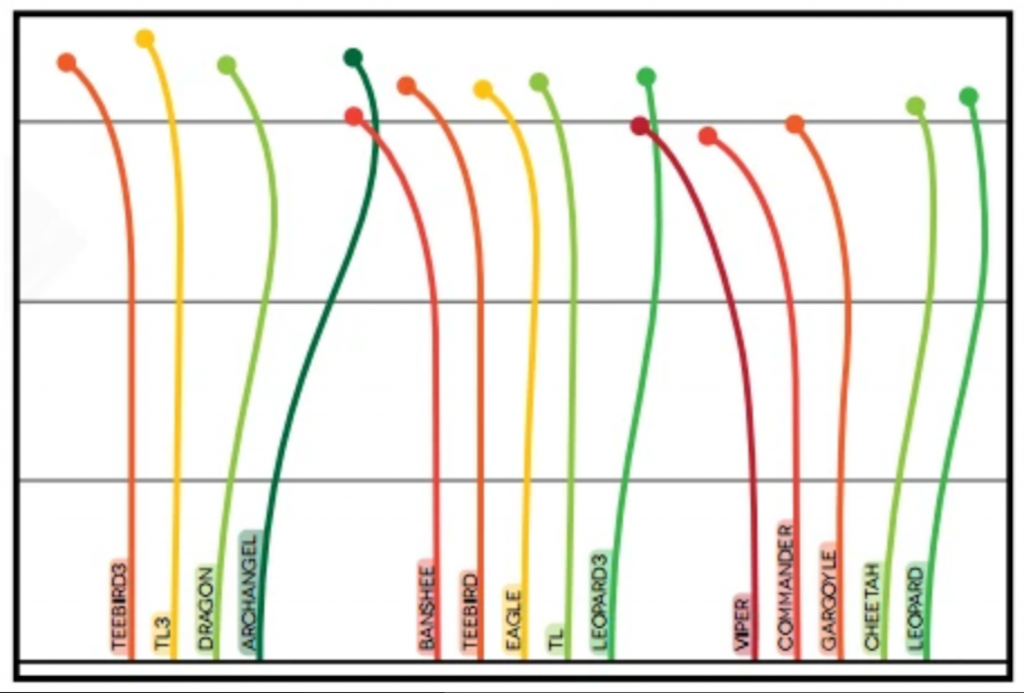
Standardized flight patterns for 14 types of Innova-brand fairway-driver discs
The tendency of each disc to retain speed, generate lift, turn at high speed, and fade at low speed are encoded in the four digits one usually finds on each disc. And by experimenting with different discs, even a beginner can observe that very slight changes in geometry can have enormous effects on trajectory. Elite golfers often own hundreds of discs, swapping them in and out of their bag according to prevailing wind conditions, course design, ground conditions, and other external factors. Moreover, unlike a golf ball, a semi-disposable asset that tends to disappear into lakes and forests, a good disc can stay with a player for years, even as its aerodynamic qualities are altered by wear. Indeed, the obsessive analysis of disc performance constitutes its own rich subculture within the sport, and is one of the reasons I enjoy playing so much.
Being strong and conventionally athletic doesn’t always help you in disc golf. Five-time PDGA (yes, it’s a thing) champion Paul McBeth is only about 5’8”, and would probably be mistaken for a caddy at a PGA event. But he can throw a disc 550 feet. Even elite female disc golfer Paige Pierce, who looks almost light enough to take flight herself in a strong breeze, can throw 450 feet (about 150 feet longer than I can do on my best day). I’ve met young children and senior citizens who easily outclass me in both distance and accuracy. As humbling as this might be, there is something magnificently democratic about a sport that lets Pee Wee Herman and André the Giant compete on an equal plane.
Disc golf is unusual in another way, too—sitting at an odd midpoint between established, big-money sports such as tennis, and more obscure novelties such as pickleball. The aforementioned Paul McBeth turned pro in 2008, and is widely considered to be the best player of all time. But his lifetime earnings are only about US$500,000—a small fraction of what a similarly successful athlete would earn in even second-tier spectator sports such as squash or badminton. Or take Thomas Gilbert, a top-rated Canadian professional whom I once personally observed hitting an eagle at the 950-foot seventh hole of Scarlett Woods in Toronto—including a 600-foot drive (he’s one of the longest drivers in the world) followed by a 350-foot approach shot that landed 30 feet from the basket. He’s probably the most gifted athlete I’ll ever meet. But he rarely earns more than a few thousand dollars per tournament.
That said, my sense is that disc golf’s popularity is very much on the upswing thanks to the pandemic. A number of veterans I’ve met on courses this year tell me they’ve seen a massive surge of new players since the spring. Like me, many of these beginners took up disc golf as a matter of necessity. But when the pandemic’s over, we’ll be sticking with it as a matter of choice.
The pandemic has caused all of us to rethink a lot of habits and preferences that we once took for granted. For many years, exercise was something I did within a slotted time-frame, usually after I left an office. I would book a tennis court or a workout class, show up in the prescribed apparel, push myself till the bell rang, go home, and do it again the next day—a rigmarole that makes far less sense now that most of my day is spent in a less structured way. I was aware that I could achieve many of the same benefits, at much less cost and in a more flexible way, by simply heading out to a local trail for a run or bike ride. But this always seemed like an aimless bore, and I don’t have enough discipline to work hard unless someone is keeping score or an instructor is telling me what to do.
In its idealized form, regular golf provides the best of both worlds by combining the rigour of a bona fide sport with jaunty perambulation among the natural splendor of field and brook. But in practice, it’s an expensive and frustrating hobby that, consistent with those two characteristics, tends to bring one into contact with more than a fair sampling of people who are spoiled and cranky. The sport has also become larded up with all sorts of deeply classist rules about wardrobe, demeanor, and membership. Perhaps the best way to describe disc golf is that it’s the sport regular golf was supposed to be, back before suburban clubs started charging six-figure initiation fees and everyone was hustled into carts as a way to speed up play and maximize revenue, even if it means no one gets any real exercise. I hate to say it, but there’s way too much whiteness.
No, disc golf won’t provide you with high-impact interval training: It’s basically a wilderness stroll punctuated by a bunch of full-body throwing motions. But if my Garmin watch is to be trusted, 36 holes of disc golf over a two-and-a-half hour span comes out to about 1,000 calories. True, I could burn off the same amount at my health club, whether on a tennis court or at Zumbacize With Jasmine. And once we all get vaccinated, I hope to return to those pursuits occasionally, if my post-pandemic disc-golf schedule permits. At the very least, I’m curious how Jasmine and everyone else at the club deals with my new body-proud disc-golf-inspired sports wardrobe. I sure hope they like Santana.
